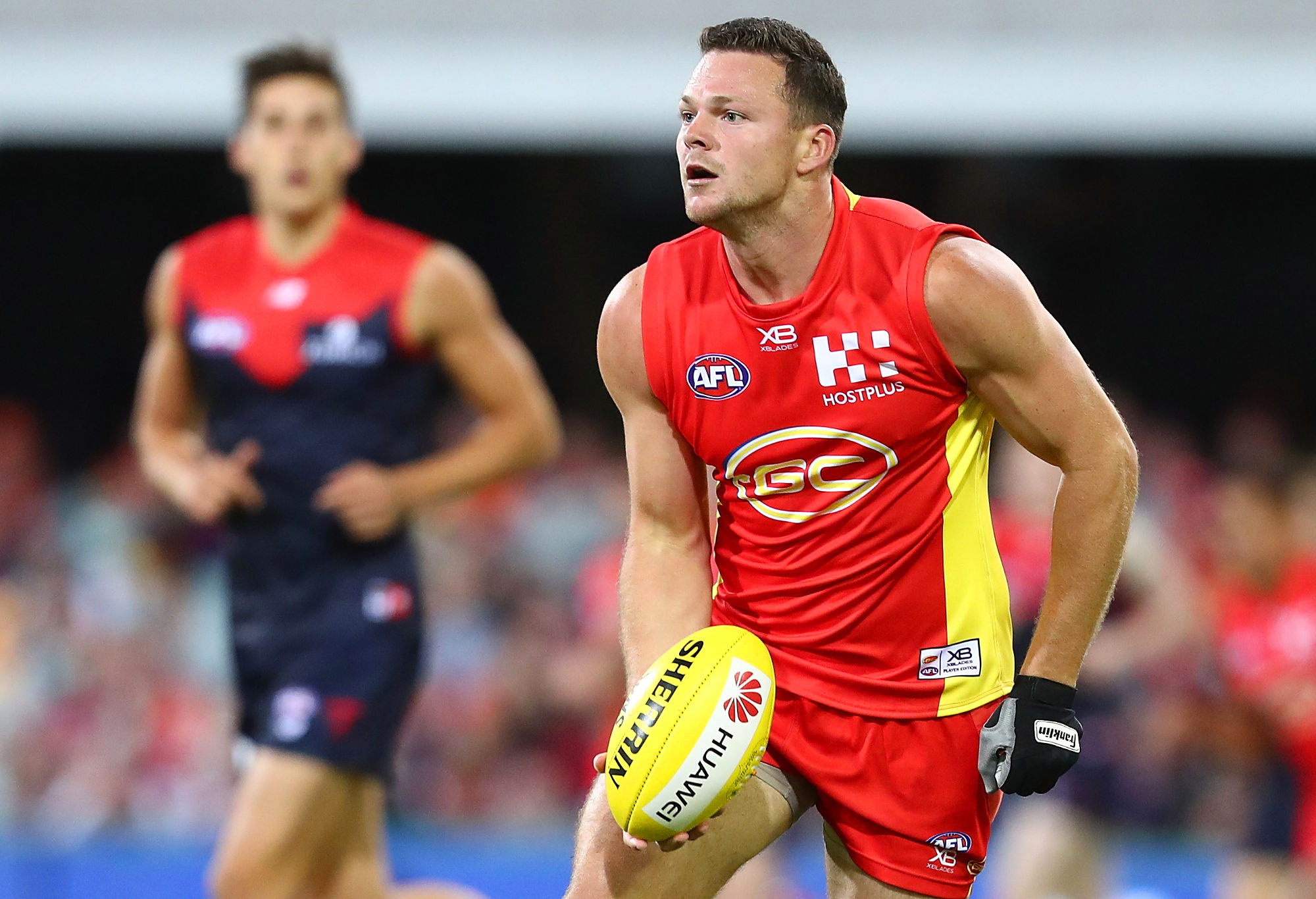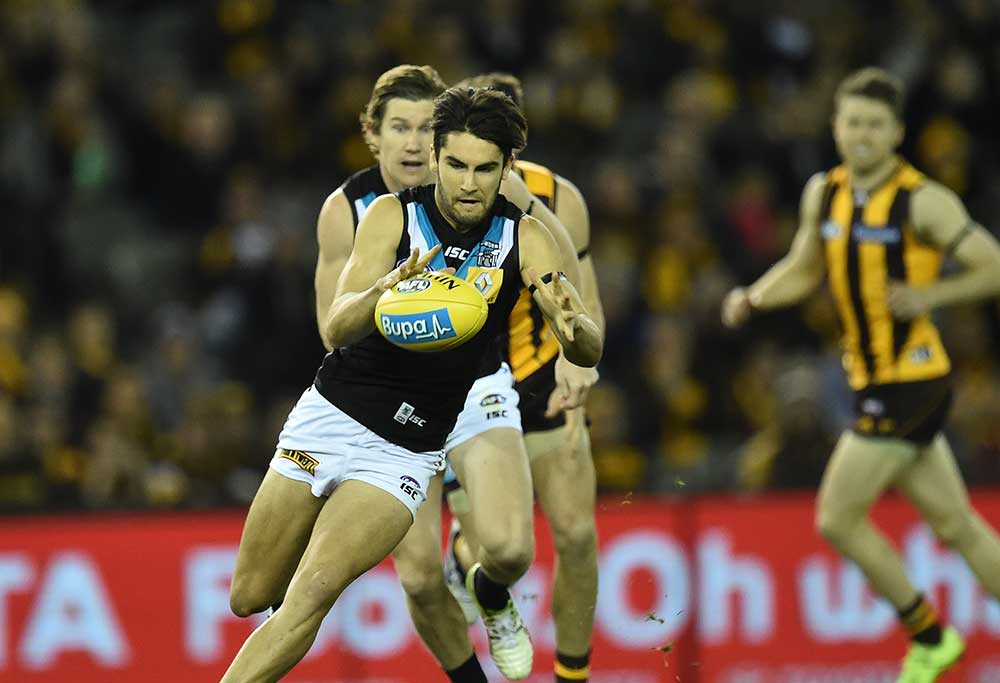'Given up': Derm rips into Joe Daniher for repeat poor efforts in Lions' loss
"You want your key forward to be a beast."
There’s a common thread to a whole heap of mooted player exchanges looming large over the 2018 off season. And it suggests players, their agents and many clubs are growing more sophisticated in how they deal with player exchange.
Steven May, Lachie Neale, Dylan Shiel and Chad Wingard. All told, there’s not a lot of commonality in those names. But there is a common thread that binds them, and is behind their respective rise to the top of the player exchange speculation charts in recent months.
You’ve heard of free agency. We’re now living in a pre-agency world.
I’ve stolen the name from – I think – US sports media figure Bill Simmons, who coined it on a podcast some time during the last NBA off season.
Its application in the NBA is simple: almost every player is a free agent when they are off contract, but most players don’t hold a veto rights over trades. There is also no free agency compensation, but that’s not a big deal in the NBA because the market for players is significantly more liquid than in the AFL on account of free agency.
Simmons’ theory is players and clubs are increasingly using the leverage associated with free agency a year or two out from a player’s eligibility to help manufacture beneficial outcomes.
So it is – or appears to be – in the AFL. The common thread linking the four players above? They are all slated to be members of the 2019 free agency pool, and through actions of their clubs, themselves, or clubs keen on their services, they are being discussed in potential trades in 2018. They are this year’s pre-agents.
Why is this happening now, in the seventh edition of the AFL’s free agency jamboree, and not in years prior? I would speculate three reasons.
First, it takes a long time for change to work its way through the AFL system. Folks I talk to that work for clubs – generally younger, and who generally came into the system from a non-football background – bemoan the conservatism and aversion to trying new things.
As we discussed at the conclusion of last year’s trade period it appears from their actions that clubs are beginning to get a bit more aggressive with their list management practices.
Geelong, Hawthorn and Port Adelaide have shown there is an appetite for aggressive moves in the offseason. This is just a logical – small – next step in that process.
Second, and I think most importantly, is the leaking of the AFL’s ‘secret’ (what a farce that is or was by the way) formula for determining free agency compensation. As a reminder, free agency compensation picks are given out in one of four bands: first round (linked to the player’s former club’s finishing position), end of first round, second round (linked) and end of second round.
The Age’s Jake Niall discovered the way the AFL dishes out picks is based on a ranking of player salaries, with ‘boosts’ given based on a player’s age that shift the ranking of the player’s salary higher the younger they are.
You can read about it a bit more here.
This is an important pre-agency development, as it allows the clubs to forecast with greater certainty the compensatory pick they would receive if they were to lose their man to another club. There is still an element of guesstimation – clubs don’t know for sure where their player would sit in the league’s player payment hierarchy – but it gives them a more informed position.
That means a club can act a year early, and attempt to secure a better return for themselves via a trade. Instead of a single draft pick, linked to finishing position, clubs can work on something more in keeping with their specific needs. This would be particularly attractive to clubs higher on the ladder, or with ambitions to get there in the short term, as the compensatory pick is linked to finishing position.
There are likely to be other benefits, such as being able to bank a year’s worth of said player’s former salary for use in a future year. Remember: salary cap space is an asset too.
That’s where the third reason comes in. Opposition clubs and player managers can use this to get an outcome a year earlier than they would otherwise, which could have a number of benefits: better timing of salary cap hits, hitting a window of team strength, or locking in your man before he has a chance to hit the open market.
This year, there is an additional wrinkle: the supposed strength of the top end of the 2018 draft class. I’m not a draftnik, but everything I read suggests the top 10-15 of this upcoming draft are all stellar prospects in their own way. Clubs who may be content to accept a compensatory draft pick in 2019 may be thinking a 2018 draft pick would be a more palatable parting gift.
The players may not move. They are all signed for another year, after which they are slated to become restricted free agents (unless they are, somehow, outside of the top 25 per cent of player payments at their club – in which case they’ll be unrestricted free agents). But if they do, we can assume it is because the pre-agency pangs above have proven too strong.
Steven May, one of a handful of original Gold Coast Suns still on the club’s list, is one of the best full backs in the competition. His aggression and stopping power would suit any club looking to lock in a back six cornerstone for five or more years (read: every club).

Steven May of the Suns (Photo by Chris Hyde/Getty Images)
The Suns have made it clear his pre-agency price is steep, because the Suns can almost assuredly bank on another bottom four finish next year, and so its compensatory pick would be relatively strong. But is that steep price worth paying to lock him in a year early, and keep him out of the hands of a rival club? Collingwood, perhaps, thinks so.
Lachie Neale is a slam dunk move for the Brisbane Lions, and a disastrous turn of events waiting to happen for Fremantle. The Dockers have a soft target of a return to finals by 2020 in their sights – losing its second best midfielder, even for a pick inside the top five, would make that already-challenging goal even more so.
The Lions know how critical an accumulating midfielder like Neale could be to their system, and so they’re willing to dance in pre-agency.
Dylan Shiel is one of the best second banana midfielders in the competition. He just happens to be the fourth banana at GWS, because of the club’s extraordinary talent. The Giants have managed to keep most of the best of their original draft concession players together, but next year’s free agency eligibility will make that more challenging.
There’s no doubt Shiel – and Stephen Coniglio, Nick Haynes and a host of other A-class Giants – will be in demand. Does Shiel shaking loose make maintaining the rest of its core a simpler task? We’ll probably find out in a few weeks’ time.

Dylan Shiel of the Giants. (Photo by Adam Trafford/AFL Media/Getty Images)
Chad Wingard is surely the best example of a club using pre-agency to explore the sort of compensation on offer ahead of a free agency decision in a year’s time. His availability came completely out of the blue, but viewed through the pre-agency lens it makes sense.
Port Adelaide would have designs on finishing high on the ladder next year, so any compensatory pick they receive would – arguably – be undervaluing the loss of Wingard. Losing Wingard would also create additional salary cap space immediately, to allow the Power some flexibility to chase other targets they may wish to add. Wingard was used as a flex midfield-forward by Port Adelaide this year, and he never quite settled into the role. Does the Power have someone else in mind for that spot?
For all of 2018’s pre-agents, their current club will be surely poorer for losing them. At least at first, because they are trading prime age players for a package of things which might be better in the long run. Moving on a pre-agent could also open up a world of other opportunities; salary cap space is an asset, and so are starting 18 positions, which these four players all certainly occupy.

Chad Wingard for the Port Power (AAP Image/Julian Smith)
The reality is this could all be idle speculation on my part, four coincidences wrapped into a neat narrative that helps write a weekly footy column. I suspect it isn’t. We may learn next year, when the 2019 pre-agency class comes into focus.
What is clear though is this year’s trade and free agency period looks set to mark the next stage in the frankly glacial evolution of player exchange in the AFL. The most recent AFL Competition Committee is thought to have signed off on an AFL Executive recommendation regarding mid season player movement, while clubs will have the ability to trade draft picks right up until they are taken ahead of this year’s National Draft.
The change is slow and sporadic. But as we wind up the season proper, and move on to the season-outside-of-the-season, it pays to remember the old rules of player movement in the AFL are being re-written.